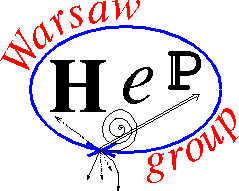SEMINARIUM FIZYKI WIELKICH ENERGII
Dnia 7 Października (piątek) o godzinie 10:15, w sali B2.38 odbędzie się
seminarium, na którym zostanie wygłoszony referat pt.:
„COMPASS – a versatile facility at CERN”
Referuje: prof. dr hab. Barbara Badełek (IFD UW)
Abstract:
The purpose of COMPASS is the study of hadron structure and hadron spectroscopy with high intensity muon and hadron beams.
The Collaboration is formed by about 200 physicists from 25 countries.
The facility was approved 25 years ago and the physics experiments started in 2002 with a muon beam, polarised proton and deuteron targets. These semi-inclusive deep inelastic scattering (SIDIS) reveals a detailed quark-gluon structure of the nucleon, in particular the gluon polarisation and transverse-momentum-dependent correlations.
The years 2008 and 2009 were dedicated to the hadron spectroscopy programme with pion and proton beams scattering off a liquid hydrogen target and nuclear targets. An unprecedented amount of data was collected and showed subtle details of the light-meson spectrum. A dedicated study of the pion polarisability using Primakoff scattering of pions from heavy nuclei was also performed.
Phase II of COMPASS commenced in 2014 and is primarily devoted to the transverse and 3D structure of nucleons using Deeply Virtual Compton scattering (DVCS), Hard Exclusive Meson Production (HEMP), SIDIS and polarised Drell-Yan (DY) reactions.
I shall repeat a plenary talk which I gave in September 2022 at the „Quarks in Nuclear Physics” conference in Florida (USA).
Serdecznie zapraszamy
dr hab. Katarzyna Grzelak
prof. dr hab. Jan Królikowski
prof. dr hab. Aleksander Filip Żarnecki

